#royal scots dragoon guards museum
Text
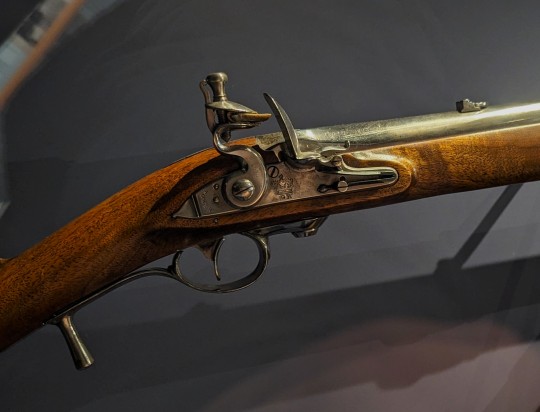
"Ferguson" Breech-Loading Rifle from Aberdeen, Scotland dated to 1776 on display at the Royal Scots Dragoon Guards Museum in Edinburgh Castle, Scotland
These rifles were invented by Lieut-Colonel Patrick Ferguson of Pitfour, Aberdeenshire. Ferguson's improved quick thread breech-loading rifle was an improvement on an earlier invention. He served as a subaltern in the Royal North British Dargoons (Scots Greys) from 1759 to 1762. Ferguson was killed in South Carolina at the Battle of King's Mountain in 1780 during the American Revolutionary War.
Photographs taken by myself 2023
#military history#18th century#hanover#gerogian#british empire#scotland#scottish#royal scots dragoon guards museum#edinburgh#barbucomedie
104 notes
·
View notes
Text

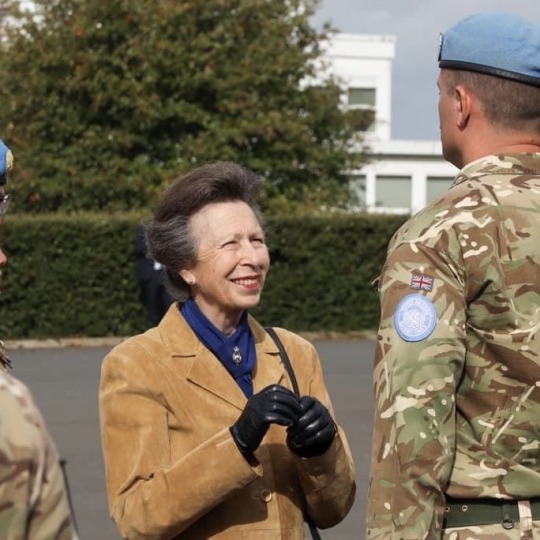
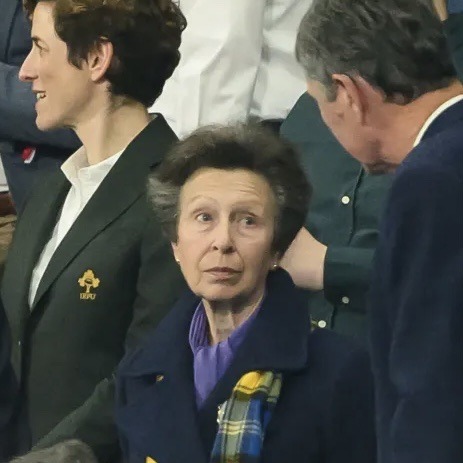
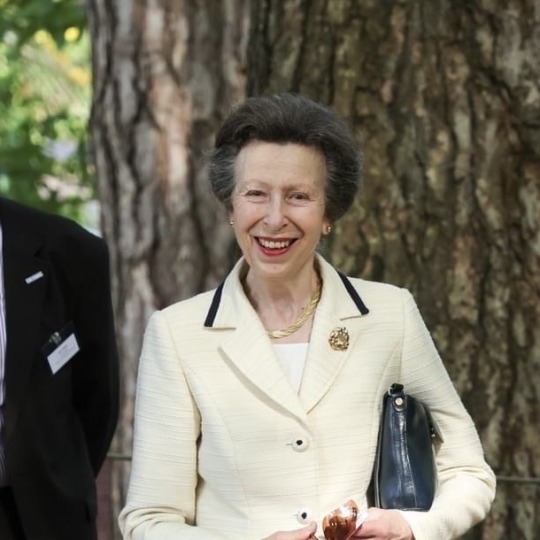
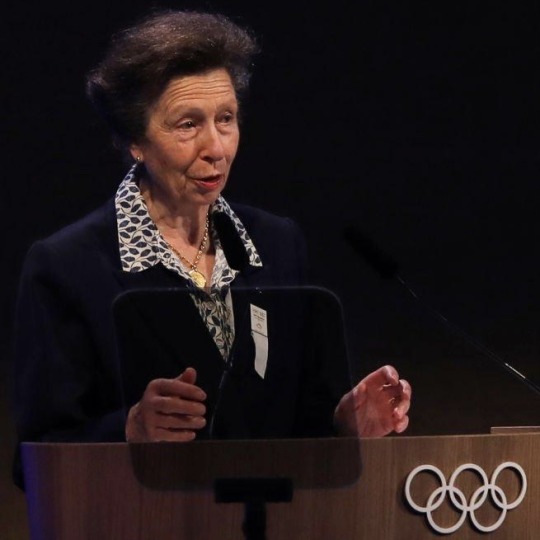
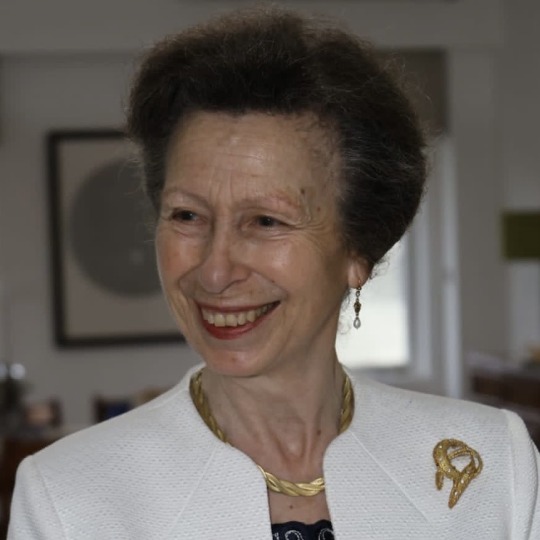



The Princess Royal’s Official Engagements in October 2023
02/10 As President of the Riding for the Disabled Association visited Avon Riding Centre, to mark its 40th Anniversary. 🐴🥳
03/10 Held two Investiture ceremonies at Windsor Castle. 🎖️
With Sir Tim As Patron of the Minchinhampton Centre for the Elderly, visited Horsfall House, Minchinhampton. 👵🏻👴🏻
04/10 In Cornwall Princess Anne visited;
Origin Coffee in Porthleven. ☕️
Camborne School of Mines at the Penryn Campus of University of Exeter, in Penryn. 🔨
St Ewe Free Range Eggs Packing Centre in Truro. 🥚
05/10 As Colonel of The Blues and Royals (Royal Horse Guards and 1st Dragoons), attended a Household Cavalry Medal Parade at Powle Lines, Picton Barracks in Wiltshire. 🫡
07/10 With Sir Tim Attended the Scotland vs Ireland Rugby World Cup match at the Stade de France in Paris. 🏴🇮🇪🇫🇷🏉
09/10 As Patron of Livability, visited Livability Millie College in Poole. 🏫
As Patron of UK Youth, visited Avon Tyrrell Outdoor Activity Centre in Bransgore. 🧗♀️
10/10 Attended a Future of UK Food Systems Seminar held by Crops for the Future at the National Institute of Agricultural Botany in Cambridge. 🚜
As Commandant-in-Chief (Youth) of St. John Ambulance, opened the new Ambulance Hub in Castle Donington. 🚑
11/10 Held two investiture ceremonies at Windsor Castle. 🎖️
Unofficial, Sir Tim attended the opening of the New Zealand Liberation Museum, Te Arawhata, in Le Quesnoy, France. 🇫🇷🇳🇿
As Patron of Scots in London Group attended a Reception at St Columba’s Church of Scotland. 🏴
Attended a Blue Seal Club Dinner at the Cavalry and Guards Club in Piccadilly, London. 🤵♂️
12/10 As Patron of the Campaign for Gordonstoun, chaired a Cabinet Meeting at the Lansdowne Club, London. 🏫
As Patron of English Rural Housing Association, attended a Parish Council Rural Housing Conference at Eversholt Hall, Bedfordshire. 🏡
Visited the Aircraft Research Association in Bedford. ✈️
As Grand Master of the Royal Victorian Order, attended Evensong and a Reception at The King’s Chapel of the Savoy, London. 🎶
14/10 Sir Tim represented Princess Anne, Patron of the Wiltshire Horn Society, at a dinner on the occasion of their centenary. 🐑
15/10 As Member of the International Olympic Committee, and Chairman of the International Olympic Committee Members Election Commission, attended the first day of the 141st International Olympic Committee Session in Mumbai, India. 🇮🇳
16/10 As Member of the International Olympic Committee, and Chairman of the International Olympic Committee Members Election Commission, attended the second day of the 141st International Olympic Committee Session in Mumbai, India. 🇮🇳
Attended an IOC Reception at Jio World Centre. 🌏
17/10 As Member of the International Olympic Committee, and Chairman of the International Olympic Committee Members Election Commission, attended the third day of the 141st International Olympic Committee Session in Mumbai, India. 🇮🇳
Visited the Commonwealth War Graves Commission Bombay 1914-1918 Memorial at the Indian Sailors’ Home, in Mumbai. 🪖
Attended a reception at the residence of His Majesty’s Trade Commissioner for South Asia and Deputy High Commissioner for Western India in Mumbai. 🌏
Unofficial Sir Tim attended a memorial service for Lord Lawson (former Chancellor of the Exchequer) at St. Margaret’s church in Westminster ⛪️
19/10 Hosted a Reception with the King, Queen and the Duchess of Edinburgh at Buckingham Palace to thank those who contributed to and were involved with the State Funeral of The late Queen Elizabeth II and with the Coronation of Their Majesties. 🥂
With Sir Tim, As Colonel-in-Chief of the Royal Army Veterinary Corps attended the launch of the Corps History Book at the National Army Museum in London. 📚
With Sir Tim, As Patron of the Royal Navy and Royal Marines Charity, attended the Trafalgar Night Dinner at the Old Royal Naval College in Greenwich, London. 🤵♀️🤵♂️
20/10 Opened Cutbush and Corrall Charity almshouse accommodation in Maidstone.
Opened the Royal British Legion Industries Centenary Village, Greenwich House, in Aylesford, Kent.
As Patron of the Butler Trust, visited HM Prison Elmley.
24/10 Held an Investiture at Windsor Castle. 🎖️
As President of the English-Speaking Union of the Commonwealth, delivered the Evelyn Wrench Lecture at Dartmouth House in London. 🏴
25/10 In Scotland Princess Anne visited;
The International Society for Optics and Photonics Photonex Exhibition at Scottish Event Campus in Glasgow. 🔍
As President of Victim Support Scotland, visited the National Office-West in Glasgow. 🫂
Peter Equi and Sons Limited Ice Cream Manufacturer. 🍦
26/10 Opened the National Honey Show at Sandown Park Racecourse in Esher, Surrey. 🍯 🐝
As Royal Patron of the Security Institute, this afternoon attended the Annual Conference at the Royal Society of Medicine in London. ⛓️
With Sir Tim As President of the Royal Yachting Association, attended a 50th Anniversary of the Yachtmaster Scheme Dinner at Trinity House, London. 🛥️🍽️
27/10 Held an Investiture at Buckingham Palace. 🎖️
31/10 In Scotland;
As Patron of the Moredun Foundation, attended a Conference at Moredun Research Institute, Pentlands Science Park, in Penicuik. 🧬
As Royal Patron of the Leuchie Forever Fund, attended a Reception to launch Leuchie House’s new strategy in Edinburgh. 🏡
As Chancellor of the University of Edinburgh, held a Chancellor’s Dinner at the Palace of Holyroodhouse. 👩🎓
Total official engagements for Anne in October: 47
2023 total so far: 400
Total official engagements accompanied by Tim in October: 6
2023 total so far: 81
#a busy bee#princess anne#princess royal#tim laurence#timothy laurence#unofficial engagement count 2023#october 2023
57 notes
·
View notes
Photo
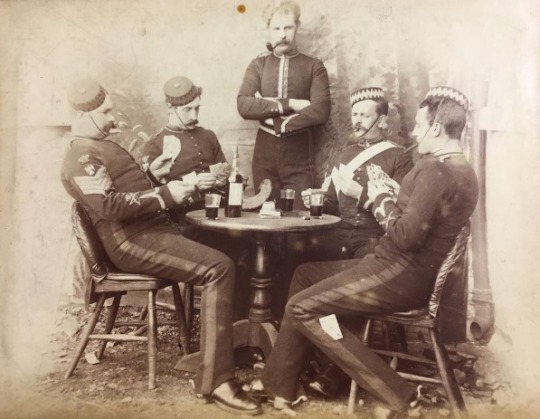
These four non commissioned officers of The Royal Scots Greys know what they will be doing with their time off #FridayFeeling
This photograph was taken in Dublin Ireland by the studio photographer, James Henry McLean around 1870. The Greys were garrisoned in Dublin itself in 1870 but had been stationed in Ireland since 1866 and were present until 1872 at which time they moved to Edinburgh.
Why not visit the museum this weekend and discover more of the stories of the soldiers of The Royal Scots Dragoon Guards and their antecedent regiments?
From The Royal Scots Dragoon Guards Regimental Museum on Instagram.
25 notes
·
View notes
Photo

David C. Weinczok @TheCastleHunter's Scottish Wonders AtoZ.
E is for Edinburgh Castle.
The second most visited tourist attraction in Scotland after The National Museum, with one costing almost £20 to visit and the other free you can see why.
Having pointed out the expense of visiting Edinburgh Castle is comparable to other attractions around the world, The Tower of London is almost a tenner more, in Ireland it's 18 euros if you want to kiss the Barney Stone, going inside The Great Pyramids is equal to £20, so you see what I mean.
If you're from Scotland I recommend getting a Historic Scotland Membership, prices start at £3.45 a month direct debit, a visit to the Castles here and a Craigmillar, and into Linlithgow and you are getting your money back, almost.
You can spend hours in the castle, get there before lunchtime and watch The One O'Clock Gun blast out, the Honours of Scotland and The Stone of Destiny are here, there are two prisons, the Royal Apartments, The Grand Hall and The Royal Scots Dragoon Guards Museum, go see the medieval bombard cannon that is Mons Meg and if you are lucky you might just see a real Scottish wedding party with everyone dressed in their Highland costumes and a piper leading them out coming out of St Margaret's Chapel, the oldest building in the castle dating back to the 12th century. You can visit Scottish National War Museum and also reflect on those lost in Wars at The Scottish National War Memorial.
Add to this the unparalleled views over the city of Edinburgh and you get an idea of why I rate the Castle so highly.
46 notes
·
View notes
Photo
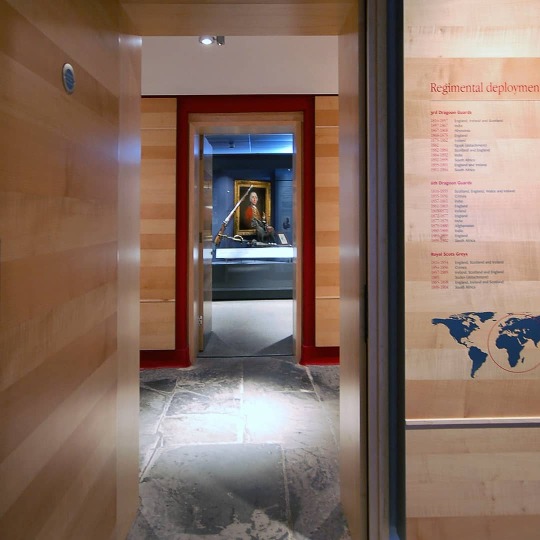
Looking ahead to 2021 after a good end to the year obtaining #ScheduledMonumentConsent from Historic Environment Scotland for alterations to The Royal Scots Dragoon Guards Museum at Edinburgh Castle with Nomad Exhibitions and Harley Haddow.
2 notes
·
View notes
Photo
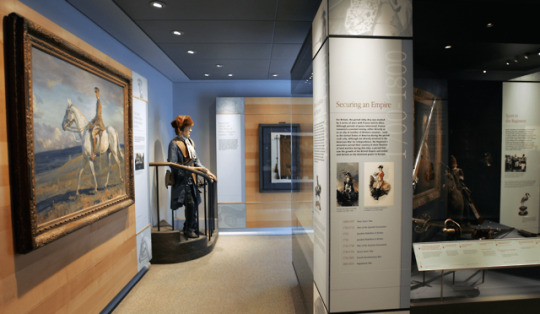
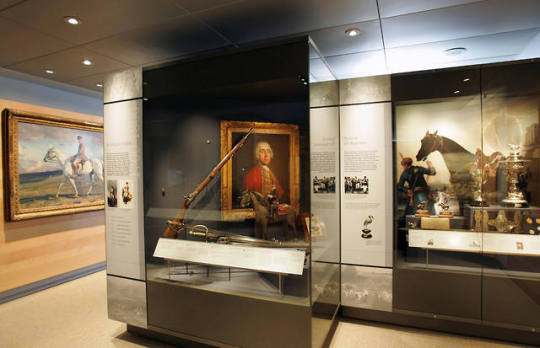
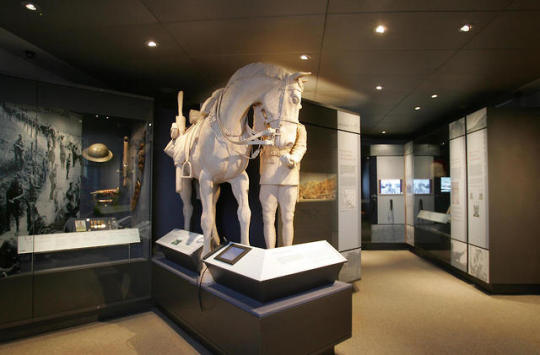

The Royal Scots Dragoon Guards museum in Edinburgh Castle.
#scots greys#royal scots dragoon guards#british army#redcoat#redcoats#edinburgh#Edinburgh castle#scotland#scottish#scots#history#military history#Scottish history
24 notes
·
View notes
Photo




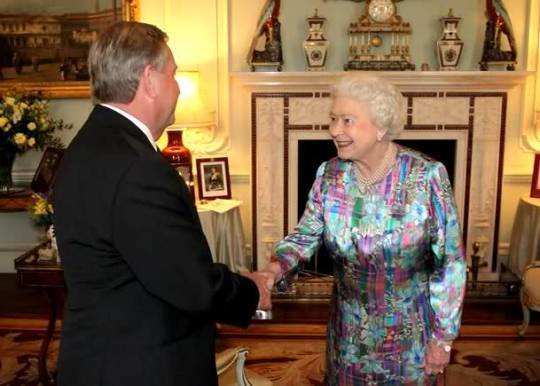
❂❂ The Queen Recycles ❂❂
2006-6-20 Ascot Day 1
2006-7-6 Royal Scots Dragoon Guards' new Museum in Edinburgh Castle
2007-6-2 Epsom Derby
2008-5-10 Royal Windsor Horse Show
2011-6-10 Private Audience at Buckingham Palace
#Royal Recycling#the queen recycles#queen elizabeth#queen elizabeth ii#british royal family#House of Windsor#Windsor#Royal Fashion
4 notes
·
View notes
Photo


Ficção
London, UK, 17th, December of Year One, Terça, Doctor. (26)
08:00 - Acordamos, tomamos banho e nos arrumamos.
08:30 - Tomamos café da manhã:
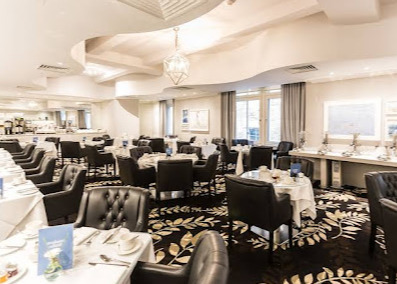


09:00 - Saímos para passear.
09:02 - Passamos em um antiquário:
Cavanagh’s Antiques


09:15 - Compramos uns presentes:
Eden
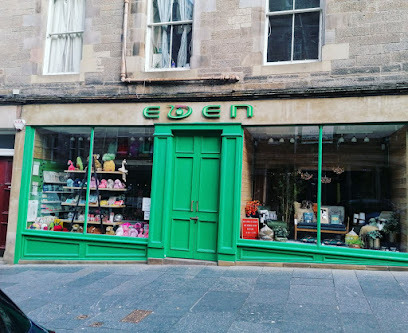
09:30 - Andamos pela rua, tirando fotos:

09:35 - Visitamos um ponto:
Edinburgh City Chambers
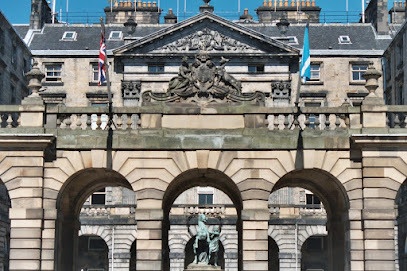
09:40 - Outra:
Alexander and Bucephalus Statue

09:42 - Fotos:
JK Rowling’s Handprints

09:45 - Outra:
The Real Mary King's Close

10:00 - Vamos a catedral:
St Giles' Cathedral

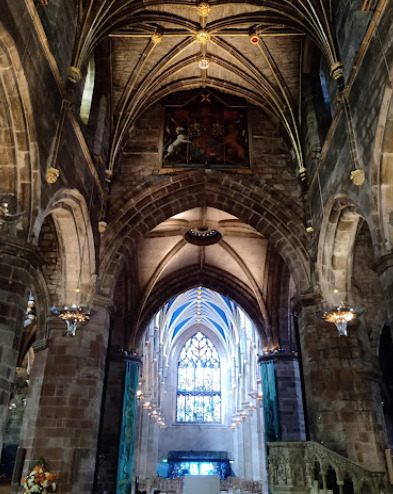
10:20 - Vamos ao museu:
Museum on the Mound

10:50 - Vamos ao castelo.
11:00 - Visitamos:
Edinburgh Castle

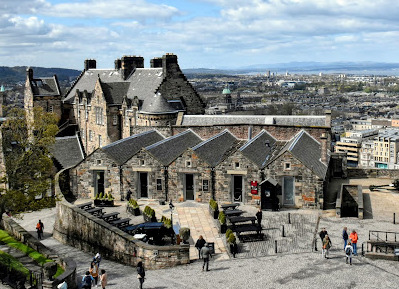
Visitamos várias áreas muito legais.
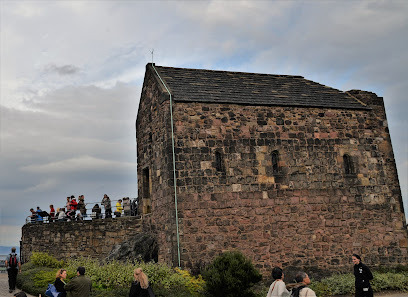


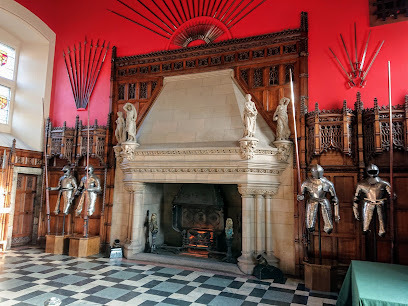
Tomamos um chá:
The Tea Rooms At Edinburgh Castle

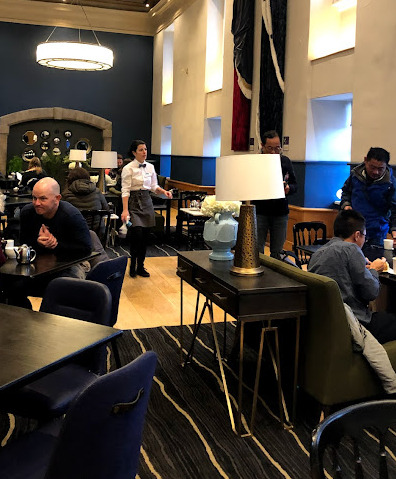


12:00 - Vamos a mais uma parte do Castelo:
The Royal Scots Dragoon Guards Regimental Museum
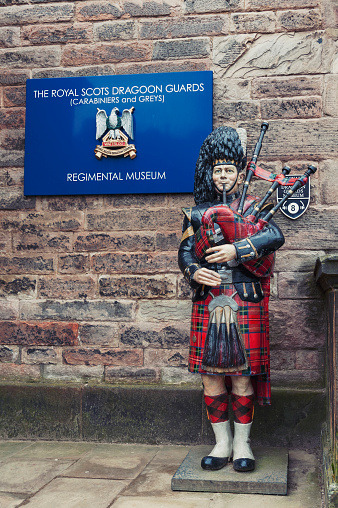
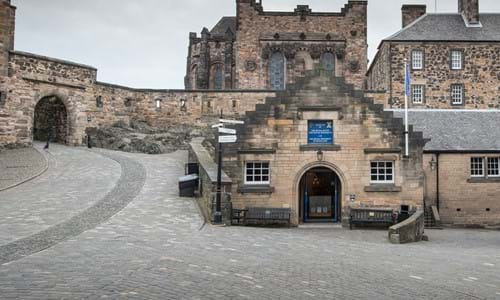
12:20 - Caminhamos pelos jardins:
Princes Street Gardens

12:50 - Visitamos a galeria:
Scottish National Gallery


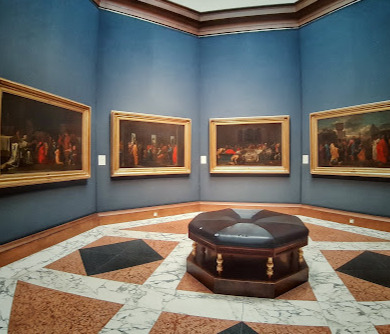
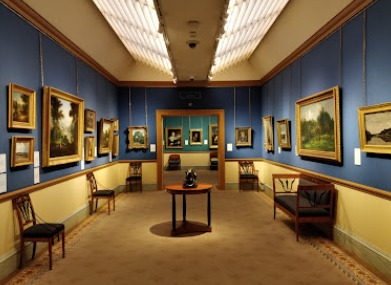
13:30 - Passeamos pela rua.
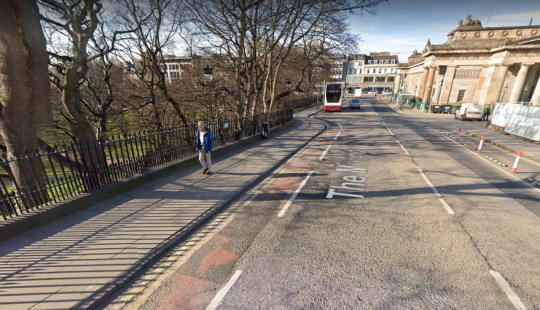
13:35 - Vamos a um museu:
The Royal Scottish Academy
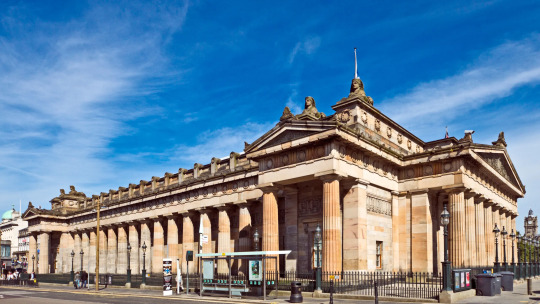



14:30 - Tiramos foto no monumento:
Scott Monument

14:40 - Vamos para o hotel.
14:50 - Chegamos e comemos um lanche no quarto:

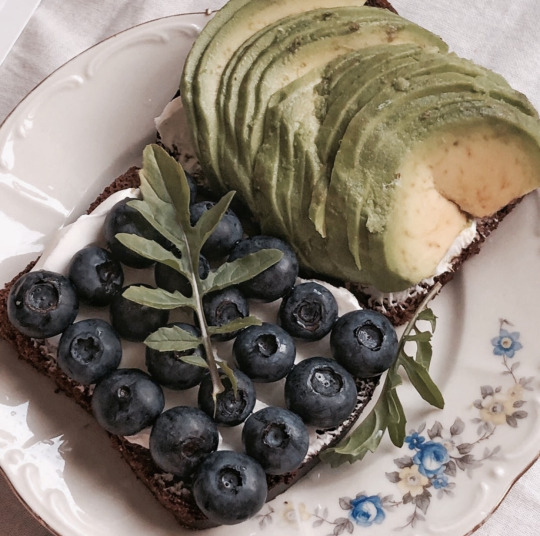


15:30 - Tiramos uma sonequinha.


16:30 - Levantamos e vamos à piscina aquecida:

17:10 - Voltamos para o quarto e recebemos um scott com docinho:

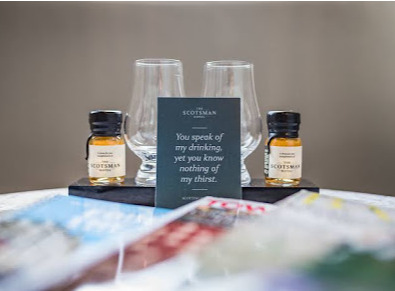


17:30 - Nos arrumamos para sair.
18:40 - Saímos.
18:46 - Jantamos:
Forage & Chatter
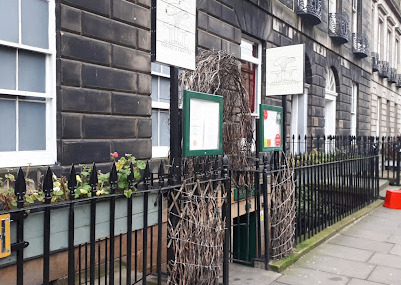


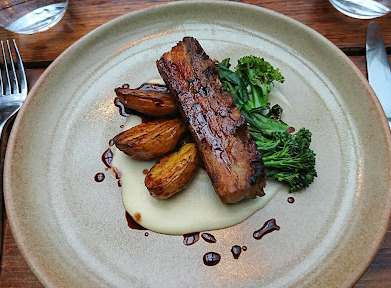
Bebemos gin e curtimos a vibe.
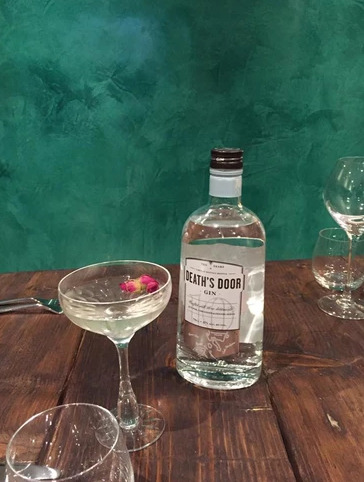
20:40 - Voltamos para o hotel.
20:50 - Chegamos e vemos filminhos.
22:00 - Dormimos.
0 notes
Text
Edinburgh Castle history: 900 years protecting Scotland’s capital
Scotland’s biggest attraction still stands proud above its capital city 900 years after its inception
It’s estimated there were once around 3,000 castles in Scotland but one stands head and shoulders above the rest: Edinburgh Castle. Edinburgh Castle history is marked by violence, political and religious intrigue, and the rise and fall of monarchs.
Nevertheless, today, Edinburgh’s iconic fortress is the country’s number one paid-for tourist attraction. Inside you can view some of the nation’s most treasured possessions, including the Honours of Scotland, or Scotland’s Crown Jewels.
The origins of Edinburgh Castle
Sitting atop an extinct volcano, Edinburgh Castle offers an excellent vantage point across the city. It was a natural site for a building that combined defence, control and honour.
The oldest existing part of the castle – which is also Edinburgh’s most antiquated building – is St Margaret’s Chapel, which dates from the 12th century.
The chapel was built by King David I to commemorate his mother, Queen Margaret (later St Margaret).
In time, King David II added David’s Tower, which was residential and defensive in design. The grand Great Hall was the work of King James IV. Its key feature is a wooden roof with beams resting on stones engraved with symbols of Scotland and its monarchs. Today its walls glisten with an impressive display of swords, shields, suits of armour and weaponry.
Attacks on Edinburgh Castle
As a military stronghold and the most prestigious building in Scotland’s capital, Edinburgh Castle was captured and recaptured many times. In fact, it’s been besieged more than any other place in Britain, with 23 recorded attempts to ‘capture the castle’. Taking the castle wasn’t just a tactical coup for Scotland’s enemies but a blow to the morale of the Scots. Violent tensions, often between England and Scotland, are now consigned to the history books but conflicts were brutal and unforgiving.
Captured in 1296 by England’s King Edward I, the Scots reclaimed it with a night attack in 1314. The English successfully attacked again in 1335 before, in 1341, Scots disguised as merchants took it back. Cromwell’s forces occupied the castle in 1650. At one point it was even handed over to the English as a ransom payment. It was captured twice by Covenanters in the 17th century, fighting against King Charles I’s imposition of Episcopacy. Bloody battles ensued with the Jacobites in the 18th century.
The ascent of King James VI
As a thriving tourist attraction today, the Royal Palace within Edinburgh Castle is a big draw as it was the home of Scotland’s kings and queens. A highlight is a small room where events unfolded that changed British history. In 1566 the birth chamber saw the arrival of a little boy, son of Mary, Queen of Scots, who was made King James VI of Scotland just a year later.
Mary, Queen of Scots’ strained relations with England led her cousin, Queen Elizabeth I, to sign her death warrant. When Queen Elizabeth I died without issue, the bloodlines led back to Mary’s son James. In 1603 the crowns of England and Scotland were united and James VI of Scotland also became King James I of England and Ireland.
In 1617 King James I returned to Edinburgh Castle to celebrate his Golden Jubilee. His birth chamber was redecorated for the occasion: it’s still possible to see the gilded decoration.
Scotland’s Crown Jewels
Scotland’s Crown Jewels, or the Honours of Scotland, are on display in the Crown Room. These include a sceptre presented to King James IV by Pope Alexander VI in 1494; a sword, gifted in 1507 by Pope Julius II; and the crown, which was first worn for the coronation of Mary of Guise in 1540.
As potent symbols of the Scottish monarchy, protecting the jewels was paramount. In the 1650s, the Honours were whisked to Dunnottar Castle, in the northeast of Scotland, then onto the small village of Kinneff, to evade Cromwell’s Parliamentarian Army.
After the Union of England and Scotland in 1707, they were locked away and not seen again until 1818. During WWII the Honours of Scotland were tucked away below a medieval latrine closet in case of Nazi invasion.
Another key attraction is the Stone of Destiny. Present at the coronation of Scottish monarchs for centuries, the stone – while unassuming to look at – is powerfully symbolic. In 1296, King Edward I of England removed the stone from Scone Palace in Perthshire and had it built into his own throne at Westminster Abbey.
On Christmas Day in 1950, four Scottish students managed to steal the stone. Its disappearance caused uproar and its location was a mystery until it was found, draped in The Saltire, outside Arbroath Abbey in 1951. This was no random drop off point but the site where the Declaration of Arbroath – in which Scotland’s nobles swore their independence from England – was written in 1320. The stone was returned to London until, in 1996, it was given back to Scotland. It will only leave the country again for a coronation at Westminster Abbey.
Edinburgh’s military links
Edinburgh Castle’s colourful military past has created other poignant sites on the sprawling complex, which adds a brutal reality to the tales of invasion, duplicity and heroics. The National War Museum of Scotland first opened in 1933 and covers 400 years of conflict. The Prisons of War exhibition tells of the inmates who languished in the castle, from pirates captured off Argyll to a five-year-old drummer boy from the Battle of Trafalgar.
The Royal Scots Dragoon Guards still have a small military garrison at the castle, but it’s the National War Memorial that often stops people in their tracks. It opened in 1927, when the architect Sir Robert Lorimer and 200 Scottish artists and craftsmen first created a Hall of Honour and Shrine, which features delicate stained glass and sculptures dedicated to Scotland’s lost generations and the names of the fallen on the Rolls of Honour.
The One O’ Clock Gun
One of the greatest appeals of Edinburgh Castle is that it’s still part of the city’s daily life. The firing of the One O’Clock Gun, which once allowed ships in the Firth of Forth to set their maritime clocks, still marks time in ‘Auld Reekie’. The Royal Edinburgh Military Tattoo and summer concerts are also huge draws.
And the biggest party of the year is, of course, Hogmanay, where new year celebrations see fireworks light up the skies, musicians performing and revellers partying as the nation – and the whole world – celebrate with the people of Edinburgh and its mighty castle.
For more stories like this, subscribe to BRITAIN
The post Edinburgh Castle history: 900 years protecting Scotland’s capital appeared first on Britain Magazine | The official magazine of Visit Britain | Best of British History, Royal Family,Travel and Culture.
Britain Magazine | The official magazine of Visit Britain | Best of British History, Royal Family,Travel and Culture https://www.britain-magazine.com/features/region/scotland/edinburgh/edinburgh-castle/
source https://coragemonik.wordpress.com/2020/08/17/edinburgh-castle-history-900-years-protecting-scotlands-capital/
0 notes
Text
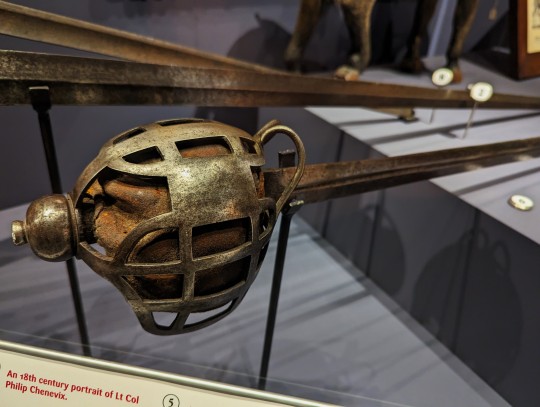
Basket-Hilted Cavalry Sword from the British Empire dated to the Mid-18th Century on display at the Royal Scots Dragoon Guards Museum in Edinburgh Castle, Scotland
Swords of this type were purchased by the colonels of the British cavalry regiments for the use of their men. The styles of hilt varied from regiment to regiment. Basket-hilted swords became popular, not just with Scottish regiments but many cavalry regiments around Europe.
The 2nd Royal North British Dragoons were part of the War of Austrian Succession (1740 - 1748) as part of the coalition forces. They fought at the battle of Dettingen in 1743 where King George II became the last British monarch to fight in a battle. In 1745 the last Jacobite Rising took place and unlike in the last risings the regiment were left in Flanders.
Photographs taken by myself 2023
#sword#british empire#cavalry#scotland#scottish#military history#18th century#georgian#hanoverian#royal scots dragoon guards museum#edinburgh castle#barbucomedie
43 notes
·
View notes
Photo

The Royal Scots Dragoon Guards #instagram #instaboy #huffpostgram #liveauthentic #lovewatts #myhotlist #scotland #edinburgh #gayboy #gayjock #gaypride #trip #travel #guards #theroyalscotsdragoonguards #weekend #zaraman #menstyle #homenscomestilo #converse (at The Royal Scots Dragoon Guards Regimental Museum) https://www.instagram.com/p/BmtszVihlN5/?utm_source=ig_tumblr_share&igshid=3yet8hs91tjj
#instagram#instaboy#huffpostgram#liveauthentic#lovewatts#myhotlist#scotland#edinburgh#gayboy#gayjock#gaypride#trip#travel#guards#theroyalscotsdragoonguards#weekend#zaraman#menstyle#homenscomestilo#converse
0 notes
Link
scotsdg_museum
New acquisition! A 1788 pattern heavy cavalry officer's sword regimentally marked to the 3rd or Prince of Wales's Dragoon Guards. This type of sword was carried by the officers of all three antecedent regiments during the Flanders campaign, 1793-95. The 1788 pattern of sword was the first standardised pattern mandated by the British government to be carried by the heavy cavalry. Prior to this, the Commanding Officer of any particular regiment was given an allowance from the government and in following broad guidelines, had a duty to equip his men. This officer's version of the 1788 pattern heavy cavalry sword differs in certain respects to that of the other ranks. The grip is made from shagreen or fish skin and the blade bears etched decoration. The overall quality of the sword’s construction will also be higher. The museum’s aim is to display the 1788 pattern sword in a future exhibition in addition to creating a blog post to be added to our website in the coming weeks. This post will further explore the story of the sword and the actions it may have been carried in. This acquisition was made possible thanks to the assistance of the National Fund for Acquisitions.
77 notes
·
View notes
Video
(via https://www.youtube.com/watch?v=QRAsTKLxB6s)
UK Dream destinations is come true : EP#13 Edinburgh Castle
ฝันให้ไกลไปให้ถึง สหราชอาณาจักร ตอนที่ 12 ปราสาท เอดินบะระ
เรียนรู้ประวัติศาสตร์ สก็อตแลนด์
https://youtu.be/QRAsTKLxB6s
Part of The Old and New Towns of Edinburgh World Heritage Site and standing majestically on top of a 340 million year-old extinct volcanic rock, the castle is a powerful national symbol.
Castle Highlights:
The Honours of Scotland, the Stone of Destiny, One o'clock Gun, Mons Meg, Great Hall, Prison of War Exhibition, St Margaret's Chapel, Royal Palace, Scottish National War Memorial, National War Museum Scotland, Royal Scots Regimental Museum, The Regimental Museum of the Royal Scots Dragoon Guards
Youtube : https://youtu.be/QRAsTKLxB6s
Location : Castlehill, Edinburgh EH1 2NG, Scotland, UK.
Tel : +44 131 225 9846
Website : edinburghcastle.gov.uk
Google Map : https://goo.gl/maps/x8wDMF9mWsm
== == == == == == == == == ==
UK Dream destinations is come true
== == == == == == == == == ==
EP#01 Bath ::
https://youtu.be/5lqnJoq86tM
EP#02 Salisbury ::
https://youtu.be/oORcgRHulBg
EP#03 Salisbury Cathedral ::
https://youtu.be/d2NS_YWgLrE
EP#04 Salisbury City tour ::
https://youtu.be/J9Fhk9NYj3k
EP#05 Stonehenge & Old Sarum ::
https://youtu.be/jxX85xui3kE
EP#06 Salisbury to York ::
https://youtu.be/dTN3Eh-o6lc
EP#07 The Royal York Hotel ::
https://youtu.be/t1p3XhfyF50
EP#08 How to use shower tap in Royal York Hotel, UK ::
https://youtu.be/Z6nx2F8n44A
EP#09 Sightseeing in York beautiful city in England, UK ::
https://youtu.be/tQ4XQsxSv4M
EP#10 Museum of Science and Industry, Manchester ::
https://youtu.be/K47nac9F_CQ
EP#11 Travel from York to Edinburgh by First Class Train ::
https://youtu.be/0S6xQx7LB1I
EP#12 National Museum of Scotland ::
https://youtu.be/8sTh6r-1uw4
EP#13 Edinburgh Castle United Kingdom ::
https://youtu.be/QRAsTKLxB6s
== == == == == == == == == ==
0 notes
Photo
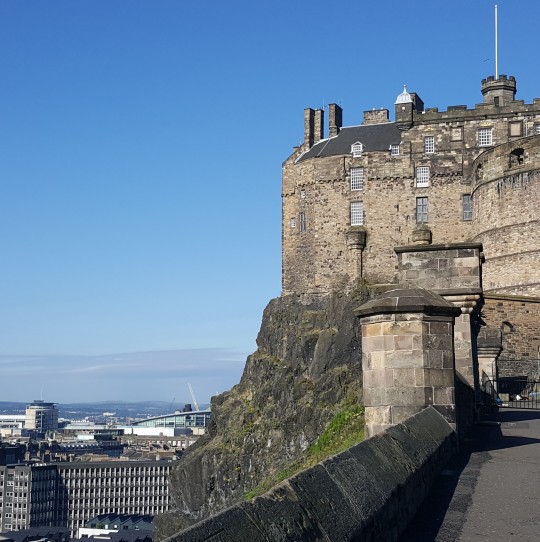
Friday morning meeting at The Regimental Museum of the Royal Scots Dragoon Guards (Carabiniers and Greys) at Edinburgh Castle. Good to be working for Nomad Exhibitions again and with Harley Haddow. Not a bad way to start the day and end the week.
1 note
·
View note
Text

Officer's Cavalry Sword from the British Empire dated between 1700 - 1730 on display at the Royal Scots Dragoon Guards Museum in Edinburgh Castle, Scotland
Swords of this type were popular with both cavalry and infantry officers at this period. The weight of this example implies that it was carried by a cavalry officer, presumably of the Royal North British Dragoons, later 2nd Royal North British Dragoons, also referred to as the Scots Greys due to the grey horses they mostly used.
In the early 18th century the regiment were involved in the War of Spanish Succession (1701 - 1715) where they were part of heavy cavalry charges that were famous for breaking the French and their allies lines. At the end of the war they returned back to Scotland to the start of the 1715 Jacobite Rising under the Earl of Mar. After this and the 1719 Rising, the regiment became a policing force in Scotland in an attempt to suppress rebellion by stepping up the military presence in the Highlands.
Photographs taken by myself 2023
#sword#cavalry#british empire#scotland#scottish#military history#18th century#georgian#hanoverian#art#royal scots dragoon guards museum#edinburgh castle#barbucomedie
9 notes
·
View notes
Text


Officer's Undress Tunic of the 2nd Dragoons (Royal Scots Greys) from the British Empire dated to 1900 on display at the Royal Scots Dragoon Guards Museum in Edinburgh Castle, Scotland
In 1899 the Royal Scots Greys were orderd to Cape Town at the start of the Second Anglo-Boer War to join the cavalry division. This year was the end of the regiment wearing the red tunics in the field as they adopted khaki along with many other British Army regiments. Supposedly the Scots Greys tried to dye their horses khaki to better camoflage themselves in the field. Cavalry uniforms used chain mail epaulettes whcih were supposed to protect their shoulders and arms from sword cuts.
Photographs taken by myself 2023
#uniform#victorian#20th century#cavalry#military history#british empire#scotland#scottish#fashion#art#royal scots dragoon guards museum#edinburgh#barbucomedie
3 notes
·
View notes